In 2023, let’s add toyon to our native plant gardens and put an urban legend to rest
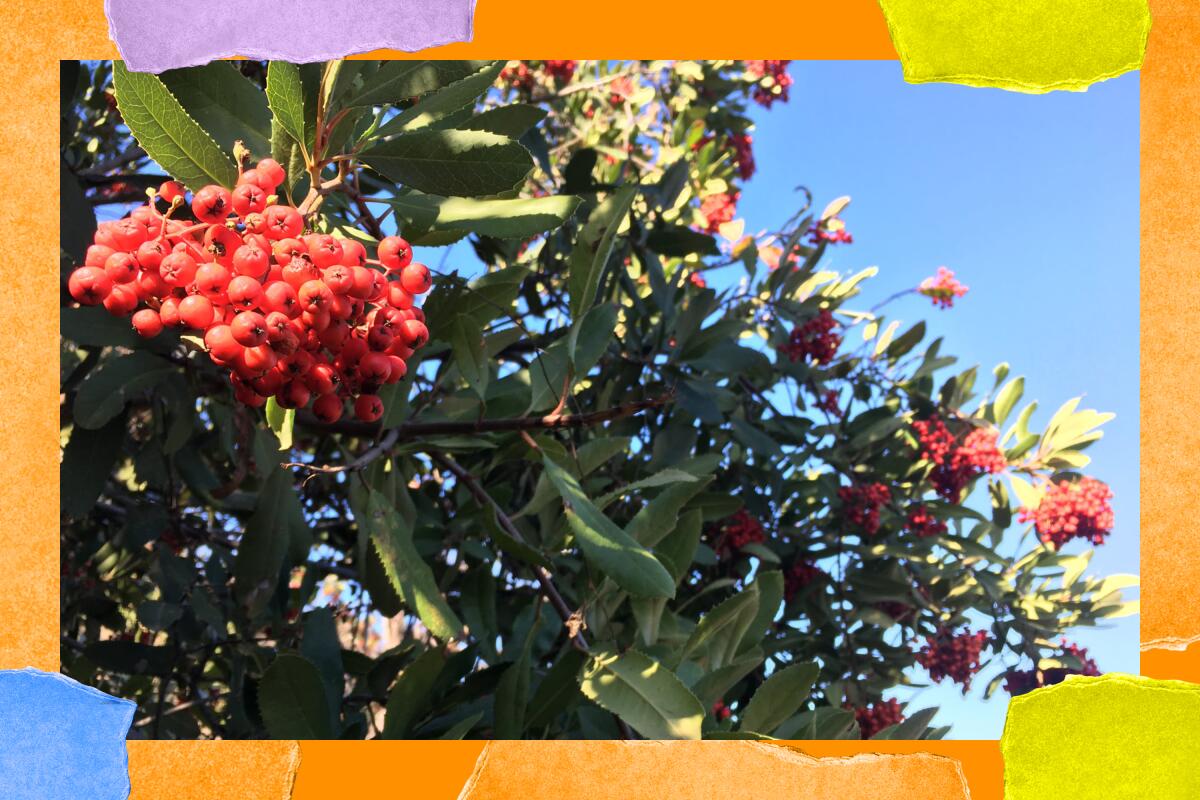
If you’re out hiking this time of year, you may have noticed an explosion of bright red berries all along the Santa Monica Mountains and San Gabriel Foothills. It’s a nice burst of color at a time when most of our plants are just starting to wake up from their summer hibernation, and it’s a festive addition to our trails, too.
People moving here from the East had a habit of naming things that were already named and, to be honest, most of the time they weren’t especially creative or original. They dubbed this red-berried shrub “California Holly,” even though the plant already had both a scientific name in Latin (Heteromeles arbutifolia and, OK, that’s a mouthful) as well as a much, much older name from the Bay Area’s Ohlone language — toyon.
As far as plants go, toyon is not remarkable at first glance. Without those bright berries, they can be easily confused with several other shrubby plants. They’re not rare either. They grow almost anywhere along the California coast into Oregon and Baja, and in the foothills of the Western Sierra too. But toyon remains one of my favorites.
Toyon is the only California native plant to retain its indigenous name. If you’re considering starting a native plant garden, they’re very forgiving to new gardeners and can make a great privacy hedge. Those red berries are an important winter food source for birds. Butterflies, moths and bees love the summer flowers. In 2012, toyon was also named the official city plant of Los Angeles (suck it, palm trees!), which I think is pretty neat. But I have a toyon shirt from the Theodore Payne Foundation, a toyon lapel pin from artist Lesley Goren, and my tattoo artist put a beautiful toyon on my wrist after I finished my book on Griffith Park, so I might be biased.
There is also a long-standing urban legend about the city of Hollywood getting its name from these plants. Daeida Wilcox is often credited with naming the subdivision she and her husband, Harvey Henderson Wilcox, planned. She said she was inspired by visiting her friend and neighbor Ivar Weid, who lived in an estate he called Holly Canyon. But Daeida Wilcox is also responsible for about a dozen other origin stories for Hollywood’s name, including the boring but probably more accurate story about riding a train through Illinois, hearing someone else talking about their estate called “Hollywood” and just swiping the name for herself. Again, these newcomers were not the most creative nomenclators.
As the new year approaches, I hope you can take a bit of time to notice some of these unique and beautiful native plants around you throughout the year. I also hope you can help put this old Hollywood name rumor to bed for good. There’s an old saying about not needing to gild a lily and, with toyon, I think we can say the berries are beautiful enough already, right?
4 things to do
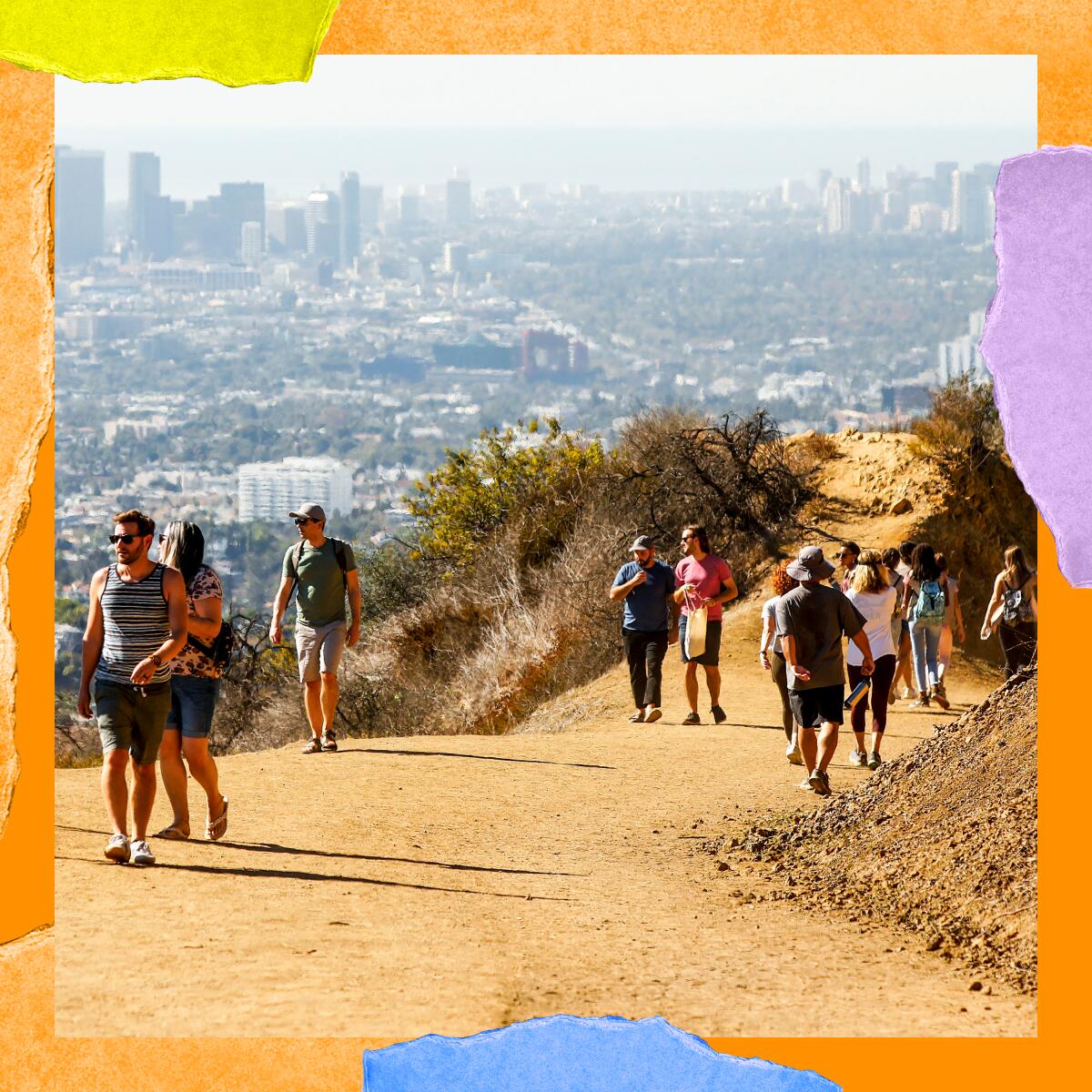
1. Griffith Park Resolution Run. If you are still looking for some concrete resolutions, the Griffith Park Resolution Run has the word right in the title! Talk about kismet! Or maybe good marketing. The races are all on Jan. 7, with the half marathon kicking off bright and early at 7:15 a.m. There is also a 12K and a 5K. There are several awards in different groups and, most importantly, free coffee. Registration fees range from $54 to $105 depending on which race you’re running. Don’t forget to stretch!
Get The Wild newsletter.
The essential weekly guide to enjoying the outdoors in Southern California. Insider tips on the best of our beaches, trails, parks, deserts, forests and mountains.
You may occasionally receive promotional content from the Los Angeles Times.
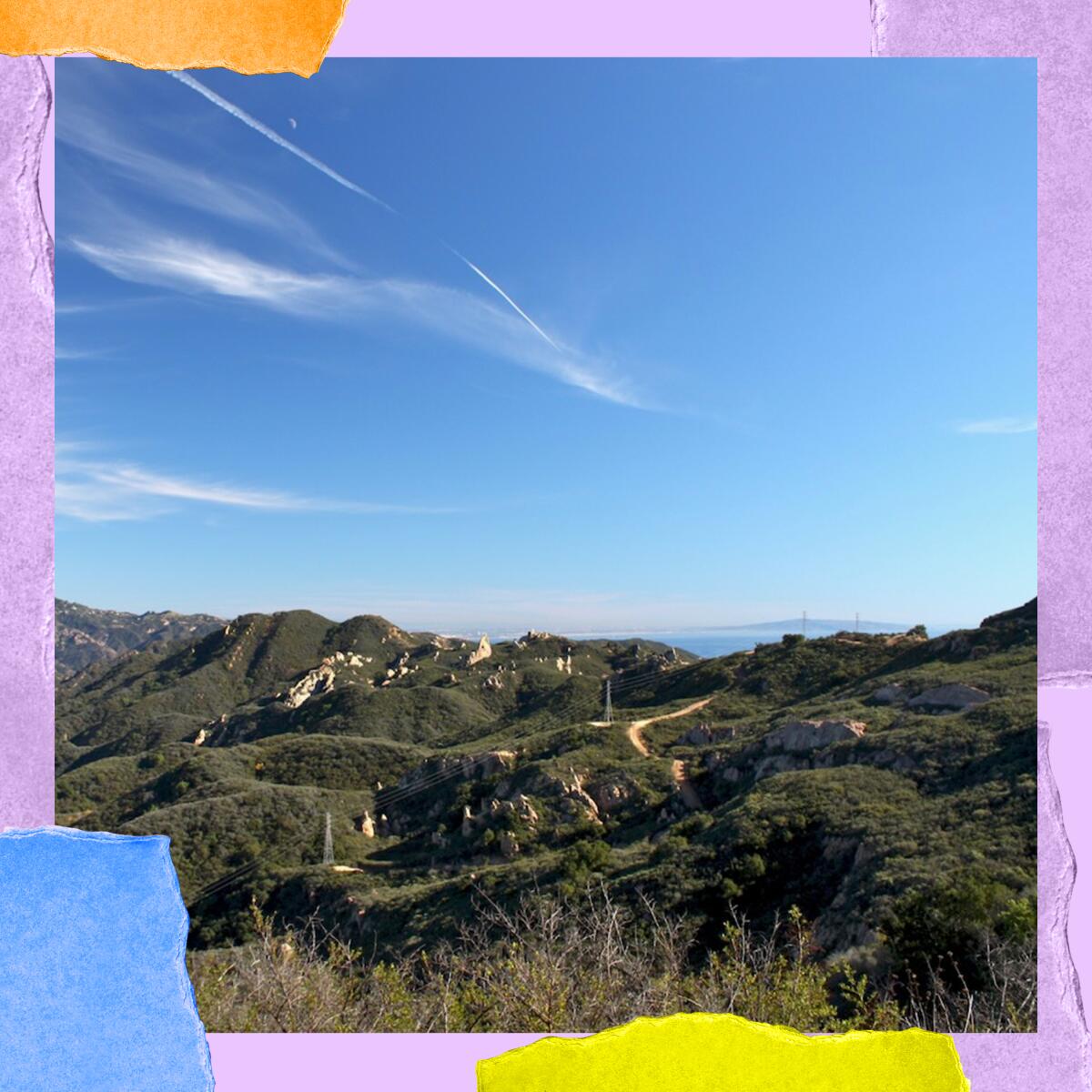
2. Malibu Creek Hike with Hiking With Dean. There really isn’t a better way to start a new year than with a good hike. It’s exercise, it’ll get you out in the fresh air and it prevents you from indulging in too much revelry the night before (nobody wants to start a new year with a hangover, right?). Join the popular Meetup group Hiking With Dean for a great trek in Malibu Creek State Park that tackles the interior south of Malibu Lake and hits up the “MASH” site before heading into lesser traveled corners of this beautiful park. This one isn’t for beginners: It’s about a 7-mile roundtrip and is rated difficult because of the terrain. The hike is Sunday, Jan. 1, from 9 a.m. to 12:30 p.m. It’s free, but an RSVP is required.
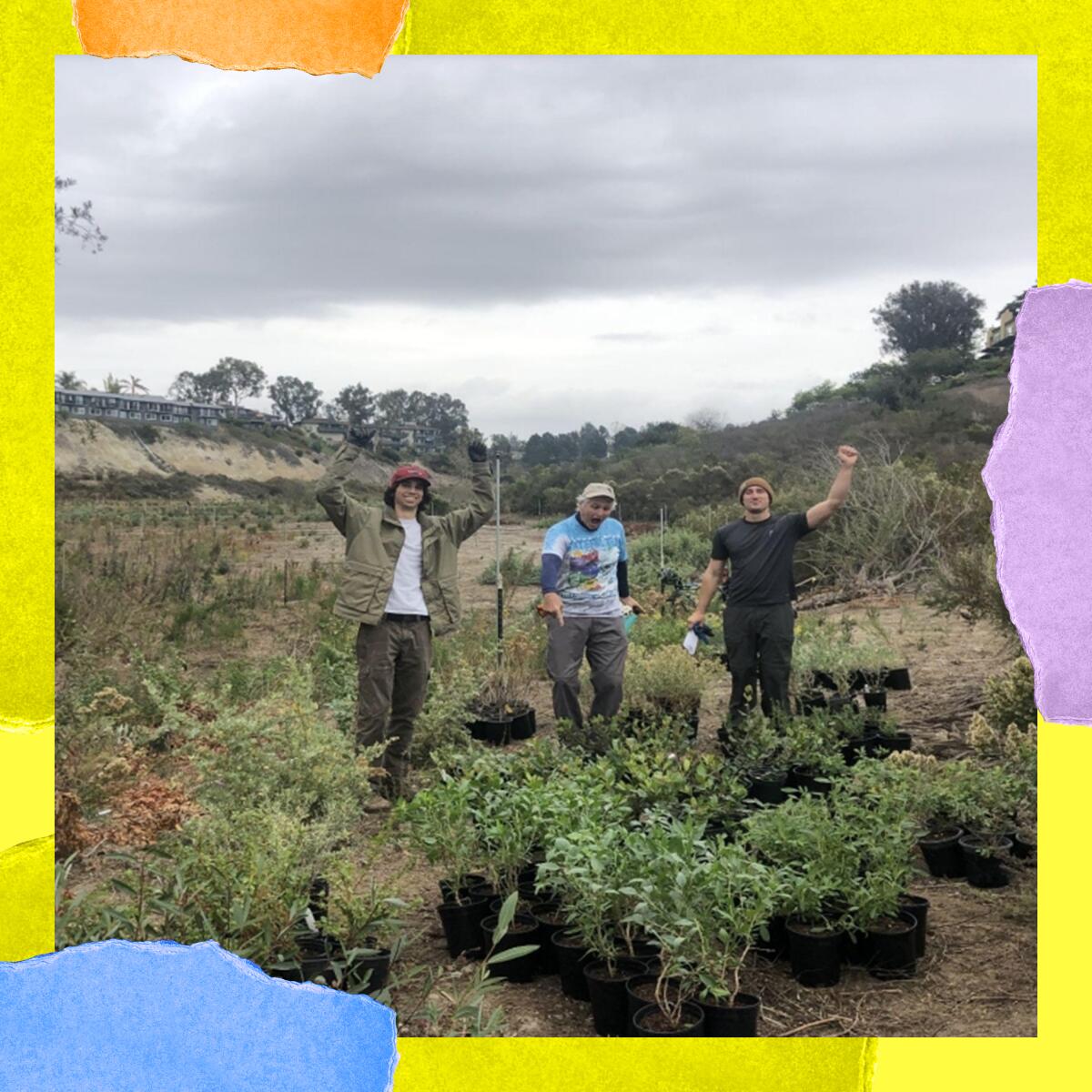
3. Sow and Grow Nursery. This might just be me, but I always find that getting my hands in the ground with some native plants is a great way to get nice and centered for whatever’s coming next. So why not join the Newport Bay Conservancy at the Back Bay Science Center in Newport Beach for some volunteer work on Friday, Dec. 30, from 9 a.m. to noon to help make the new year a little greener? If you can’t make this one, don’t worry. They meet every Friday. To RSVP and for more info on this free event, go here.
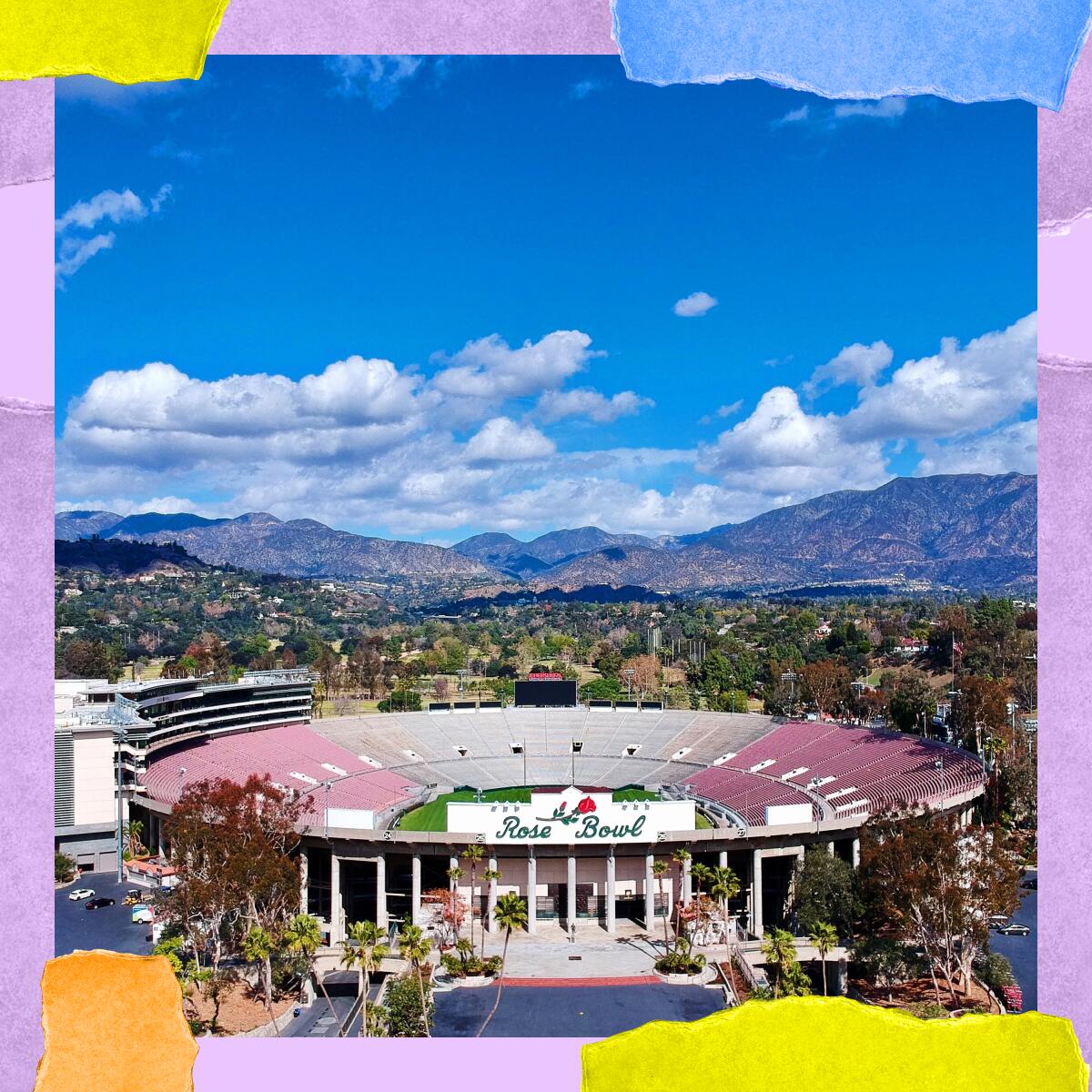
4. Rose Bowl Stadium holiday tours. If you’re in town for the Rose Bowl game or you just like watching the parade (I love it, but I’m more of a Doo Dah guy, personally), this time of year you can join a behind-the-scenes tour of the world-famous Rose Bowl Stadium. You’ll get to see the original 1922 locker room, pop into the press box and luxury suites and more! Afterward, be sure to take a nice stroll and get some more fresh air along the nearby Arroyo Seco. The tour is offered at 10:30 a.m. and 12:30 p.m. on Jan. 3, with tickets running you $20-$25.
The must read
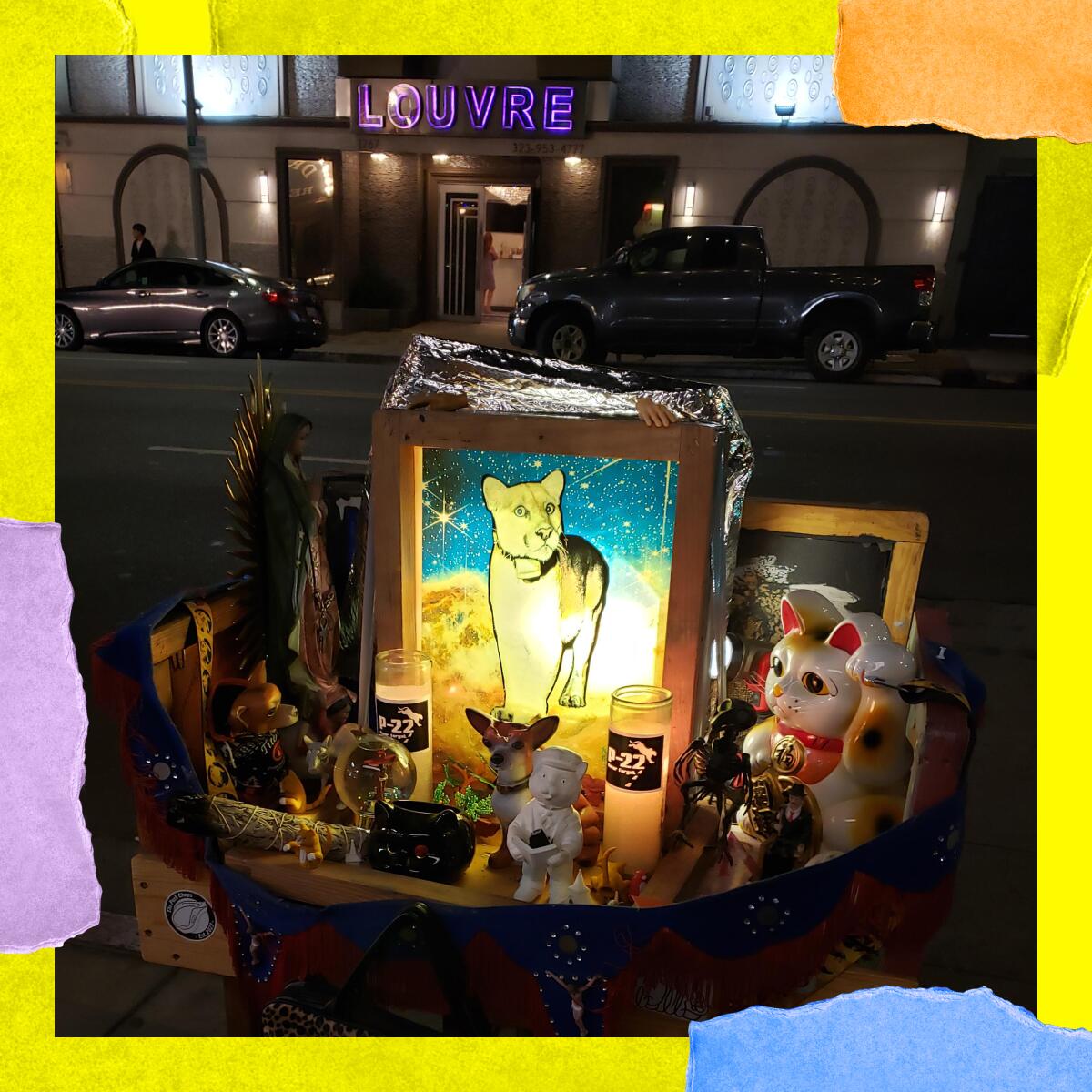
P-22 was a mountain lion loved by many different people for many different reasons, so it’s perhaps not completely surprising that even in death, the proceedings are not exactly simple. The confusion about what would happen to P-22’s remains was not helped by a flurry of unsubstantiated conspiracy theories that emerged before he was even brought in for a health evaluation. The Times’ Nathan Solis brings us an update on what’s happening, which thankfully does include extensive communication with our local indigenous communities and thankfully does not include taxidermy of the remains for display.
Check out “The Times” podcast for essential news and more.
These days, waking up to current events can be, well, daunting. If you’re seeking a more balanced news diet, “The Times” podcast is for you. Gustavo Arellano, along with a diverse set of reporters from the award-winning L.A. Times newsroom, delivers the most interesting stories from the Los Angeles Times every Monday, Wednesday and Friday. Listen and subscribe wherever you get your podcasts.
The red flag
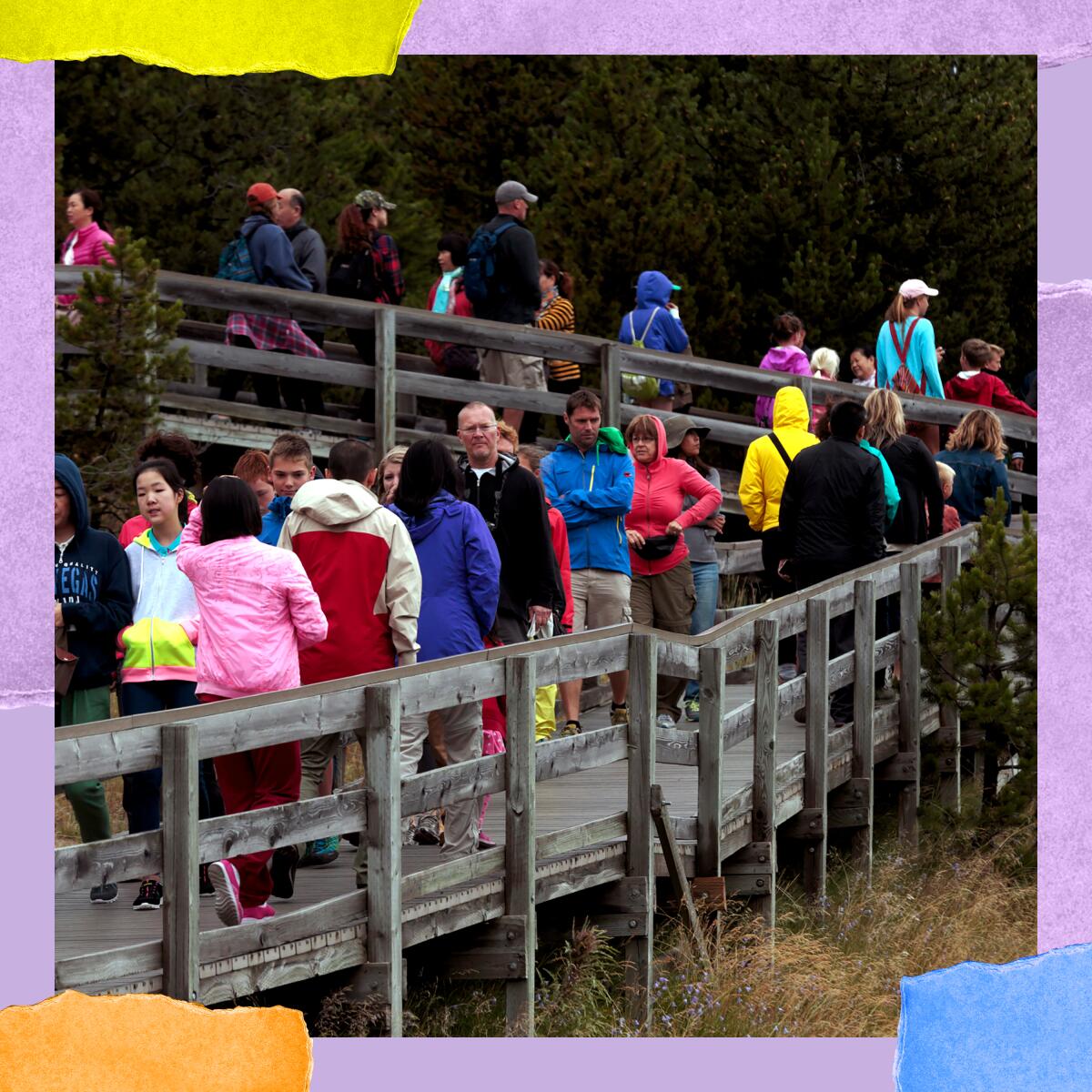
No doubt you have noticed the actions and behavior of your fellow humans have seemed a little more … shall we say … short-tempered over the past few years. Unfortunately, this behavior seems to have finally made its way to national parks. The Atlantic has an in-depth piece about Humans Behaving Badly at Yellowstone National Park, with plenty of stories of visitors reducing park and lodging staff to tears for no good reason. But, dear readers, all is not lost. The piece also looks at Bozeman, Mont., a gateway community for Yellowstone and one of the country’s most notorious pandemic “zoomtowns.” Here, the volatile mix of locals and formerly urban newcomers is being calmed by the group Outside Kind, which is teaching the many different kinds of people who enjoy the outdoors to coexist peacefully through — wait for it — calm, nonjudgmental conversation. Maybe there’s a lesson here for all of us?
Wild thing
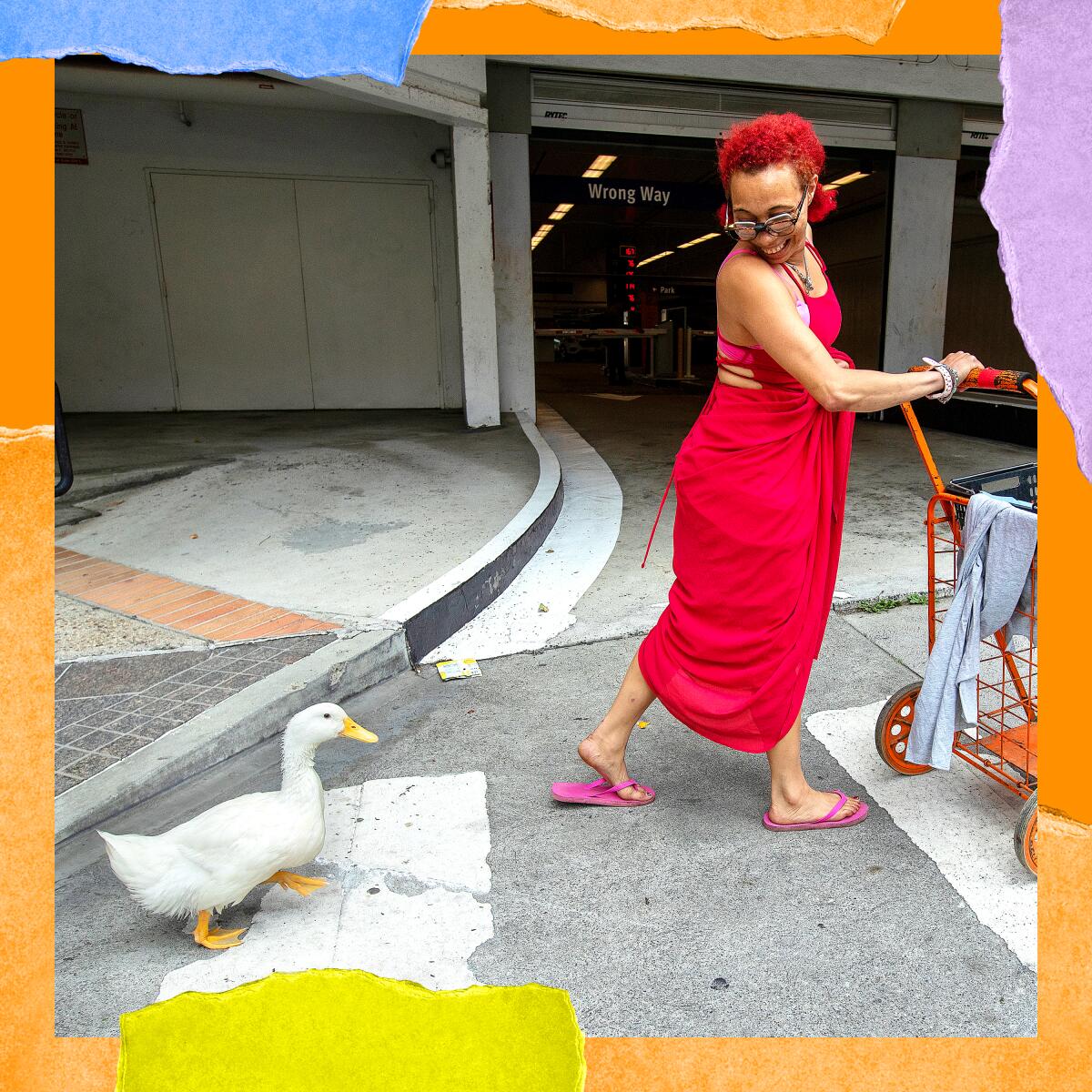
Since it’s the last Wild of the year, why not take a look back at some of the best animal-related stories of the year from The Times? Of course we’ve got updates on P-22, the Once and Future King of Griffith Park, as well as fellow Griffith Park animal celebrity Reggie the Alligator, a duck named Cardi D, tarantulas, peregrine falcons, pythons and more.
P.S.
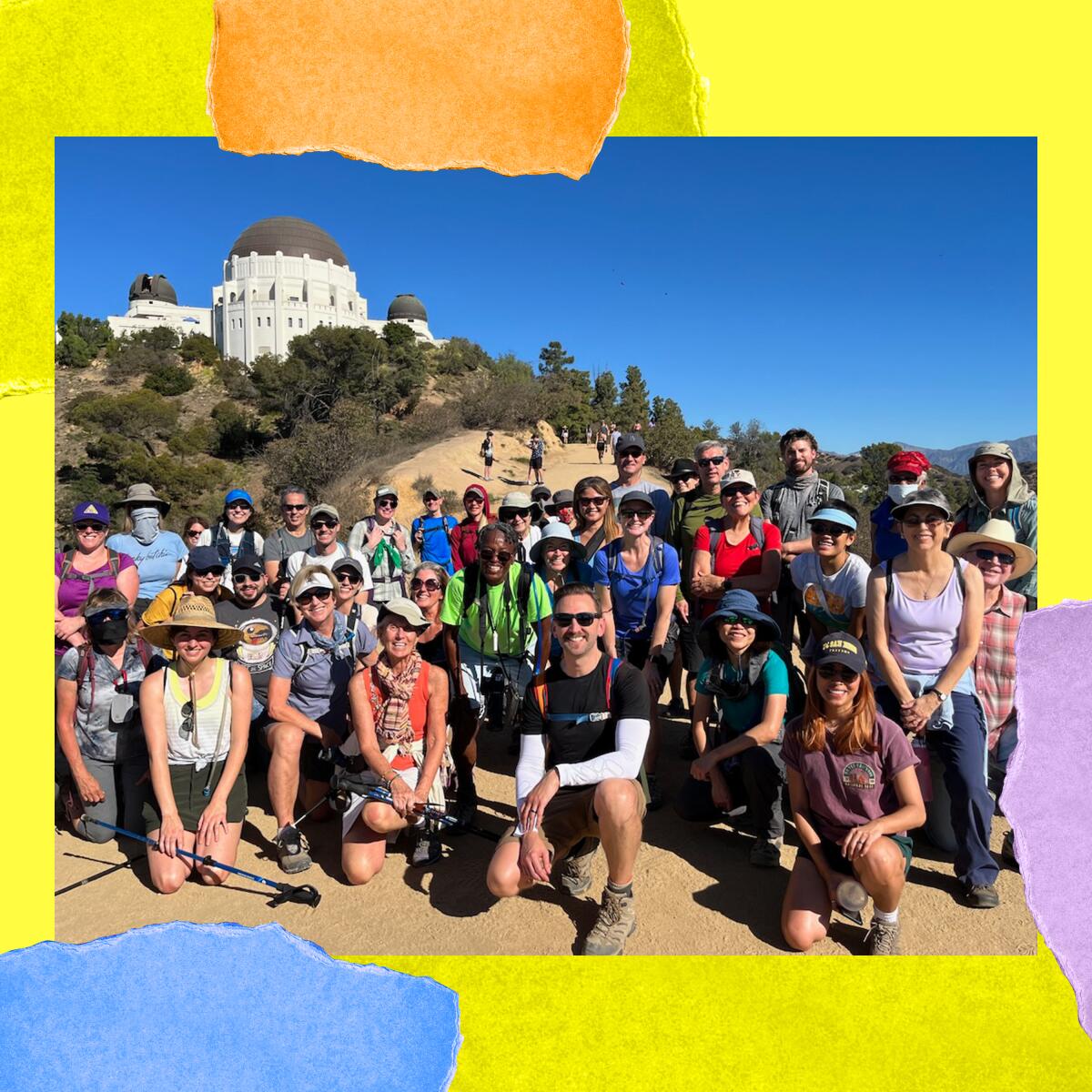
Dear readers, this final Wild newsletter of 2022 is my final issue behind the keyboard for the time being. This has been a truly rewarding project to work on, and I hope you’ve had fun reading some of the ramblings I’ve been sending to your inbox. I’ve really loved getting to know you and sharing my favorite (and sometimes the most frustrating) parts of our unique landscape.
If you’ve enjoyed my work here, be sure to follow me over at Modern Hiker, where I’ve been writing about the outdoors since 2006. I also have three books out right now: a hiking guide for the Los Angeles area, the first and only in-depth guidebook for Griffith Park and a book on using cloud observations to build a mindfulness practice. If you see me out on a path somewhere, I’ll happily sign one for you, too.
Until then, friends, may your trails be happy, your sagebrush be fragrant and your boots remain blister-free.
—Casey
In the previous newsletter, we misspelled Steven L. Morris’s first name as Stephen.
For more insider tips on Southern California’s beaches, trails and parks, check out past editions of The Wild. And to view this newsletter in your browser, click here.
Sign up for The Wild
We’ll help you find the best places to hike, bike and run, as well as the perfect silent spots for meditation and yoga.
You may occasionally receive promotional content from the Los Angeles Times.




